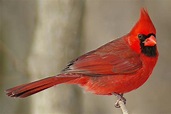
BIRDS AND BUTTERFLIES
Bird Feeding in Winter
By Karin Bolcshazy


The most common birds you will find around your backyard feeder in winter in PA are:
- Northern Cardinal
- Dark-eyed Junco
- American Crow
- Downy Woodpecker
- Blue Jay
- Tufted Titmouse
- White-breasted Nuthatch
- Mourning Dove
- White-throated Sparrow
- Red-bellied Woodpecker
- Carolina Wren
- American Goldfinch
- Song Sparrow
- House Finch European
- Starling
- House Sparrow
- Black-capped Chickadee
- Carolina Chickadee
- American Robin
- Hairy Woodpecker
To successfully attract the greatest variety of birds, follow these suggestions:
1. Use high-quality bird food and seed and choose a mix that appeals to a wide variety of birds. Many of the cheaper brands contain fillers. Important is to properly store seed and other food in a dry and cool place safe from bugs, rodents, etc.
2. Provide for a variety of bird species with different needs and preferences in food, such as seeds, berries, nuts, suet. You will also want to provide several types of feeders, such as hopper, tube, thistle, and squirrel proof feeders. Locate them in several areas to prevent overcrowding, reduce negative interactions between competing species and lessen the likelihood of spreading disease to one another.
3. Place bird feeders in a safe area like several feet from the natural cover of trees and bushes, so birds can hide in the event of an ambush, yet far enough away so that predators can"t lie in wait for them. Long extended hooks and squirrel proof feeders can help keep some critters away. Possibly consider taking your feeders in at night.
4. Clean bird feeders regularly. Keep bird feeders scrupulously clean by soaking/scrubbing thoroughly with dish soap, rinsing with a solution of 1-part non-chlorine bleach to 9-parts hot water, and finishing with a thorough rinse with clean water. Dirty bird feeders become breeding grounds for bacteria, mold, and viruses that can sicken your feathered visitors. Sweep up spilled food and hulls from beneath the feeders frequently to discourage foraging rodents, and remove snow after storms to keep seed dry and ensure birds have access to it.
5. Keep your feeders filled. Birds typically do the majority of their foraging for food or visiting of bird feeders late in the afternoon to prepare for the night ahead, as well as first thing in the morning to restore their energy reserves after spending the night hunkered down with feathers fluffed to create insulation.
6. Provide a source of fresh water. Birds need to drink year round, but finding sources of water in the coldest months can be difficult. A birdbath lets even small birds perch for a drink, but if you live in an area where temperatures routinely dip below freezing, a heated birdbath will prevent the water from turning to ice.